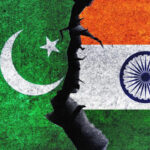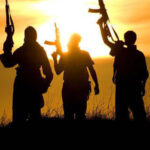“Indian Army is firmly committed to protect the territorial integrity and sovereignty of the nation,” the statement said.
Twenty Indian personnel, including a Colonel, were killed in violent clashes with Chinese troops on Monday along the Line of Actual Control (LAC) in Ladakh, in what is possibly the worst incident between the two countries in decades. The clashes came amidst a “de-escalation” process in the Galwan area that was started last week, after a month long standoff between troops at several points along the LAC in Ladakh and Sikkim.
“Indian and Chinese troops have disengaged at the Galwan area where they had earlier clashed on the night of June 15/16 June. Seventeen Indian troops who were critically injured in the line of duty at the standoff location and exposed to sub-zero temperatures in the high altitude terrain have succumbed to their injuries, taking the total that were killed in action to 20,” the Army said in a late-night statement.
Casualties on both sides
The violent face-off took place during the de-escalation process underway in the Galwan Valley and resulted in “casualties on both sides”, the Army stated. Indian Army is firmly committed to protect the territorial integrity and sovereignty of the nation, it added.
However, Army sources said there was no firing during the face-off.
Three of the personnel killed have been identified as Colonel B. Santosh Babu from Telangana, Havildar Palani from Tamil Nadu and Sepoy K.K. Ojha from Jharkhand.
During the day talks were held at the Major General-level in the Galwan area at Patrolling Point 14 to defuse the tensions.
As news of the brutal clash, that according to sources included the use of iron clubs and rocks by the Chinese troops emerged, Defence Minister Rajnath Singh reviewed the operational situation in Eastern Ladakh along with the Chief of Defence Staff (CDS) and three service Chiefs, and External Affairs Minister S. Jaishankar.
In a statement, The Chinese People’s Liberation Army (PLA) accused India “of going back on its word” and “violating commitments” reached by both sides at Corps Commander-level talks on June 6.
The Indian Army “violated its commitment and crossed the Line of Actual Control (LAC) again, illegally and deliberately launched provocative attacks, triggered fierce physical confrontation between the two sides, resulting in casualties,” said PLA Western Theater Command spokesperson Zhang Shuili, making the claim that “the sovereignty of the Galwan Valley region has always belonged to [China]”, something India has always contested.
The Chinese Ministry of Foreign Affairs (MFA) spokesman Zhao Lijian said China has “lodged strong protest and representation with the Indian side”. It is understood this was conveyed in meetings on Tuesday held between Indian Ambassador to China Vikram Misri and Chinese Vice-Foreign Minister Luo Zhaohui. Neither the PLA nor the MFA gave details of casualties on the Chinese side.
Pressure on govt.
The casualties in combat action, have increased pressure on the government to make a full statement on the month long standoff, as demanded by Opposition parties.
Last Saturday, in the first acknowledgement of the ongoing standoffs, Army Chief Gen. Manoj Naravane had stated that troops of India and China were “disengaging” in a phased manner from the standoff areas along the border following the series of ground talks and even claimed that a “lot of disengagement” had happened in the Galwan river area.
Neither the Army nor the Ministry of External Affairs (MEA) gave further details of the clash on Monday night in the Galwan valley. Sources said the Indian Army patrol had set out to check on positions of the Chinese troops to ensure they had retreated. The troops were attacked by a much larger group of Chinese soldiers, said the sources, who did not wish to be identified.
The standoff had begun with a scuffle in the Pangong Tso area on the intervening night of May 5/6, resulting in serious injuries on both sides. Around 76 Indian personnel were injured including a Commanding Officer, who had to be airlifted to Delhi. There was a second scuffle on May 9 at Naku La in North Sikkim.
While faceoffs and standoffs keep occurring on the LAC and even stone throwing and fist-fights between troops due to differences in perception on the alignment, there has been no instance of firing on the 3,488 km long LAC since 1975.
The last incident of firing and fatalities on the border with China occurred in October 20, 1975 when a patrol team of the Assam Rifles was ambushed by the Chinese troops at Tulung La in Arunachal Pradesh resulting in the death of four personnel.
Indian Army says 20 soldiers killed in clash with Chinese troops in the Galwan area
“Indian Army is firmly committed to protect the territorial integrity and sovereignty of the nation,” the statement said.
Twenty Indian personnel, including a Colonel, were killed in violent clashes with Chinese troops on Monday along the Line of Actual Control (LAC) in Ladakh, in what is possibly the worst incident between the two countries in decades. The clashes came amidst a “de-escalation” process in the Galwan area that was started last week, after a month long standoff between troops at several points along the LAC in Ladakh and Sikkim.
“Indian and Chinese troops have disengaged at the Galwan area where they had earlier clashed on the night of June 15/16 June. Seventeen Indian troops who were critically injured in the line of duty at the standoff location and exposed to sub-zero temperatures in the high altitude terrain have succumbed to their injuries, taking the total that were killed in action to 20,” the Army said in a late-night statement.
Casualties on both sides
The violent face-off took place during the de-escalation process underway in the Galwan Valley and resulted in “casualties on both sides”, the Army stated. Indian Army is firmly committed to protect the territorial integrity and sovereignty of the nation, it added.
However, Army sources said there was no firing during the face-off.
Three of the personnel killed have been identified as Colonel B. Santosh Babu from Telangana, Havildar Palani from Tamil Nadu and Sepoy K.K. Ojha from Jharkhand.
During the day talks were held at the Major General-level in the Galwan area at Patrolling Point 14 to defuse the tensions.
As news of the brutal clash, that according to sources included the use of iron clubs and rocks by the Chinese troops emerged, Defence Minister Rajnath Singh reviewed the operational situation in Eastern Ladakh along with the Chief of Defence Staff (CDS) and three service Chiefs, and External Affairs Minister S. Jaishankar.
In a statement, The Chinese People’s Liberation Army (PLA) accused India “of going back on its word” and “violating commitments” reached by both sides at Corps Commander-level talks on June 6.
The Indian Army “violated its commitment and crossed the Line of Actual Control (LAC) again, illegally and deliberately launched provocative attacks, triggered fierce physical confrontation between the two sides, resulting in casualties,” said PLA Western Theater Command spokesperson Zhang Shuili, making the claim that “the sovereignty of the Galwan Valley region has always belonged to [China]”, something India has always contested.
The Chinese Ministry of Foreign Affairs (MFA) spokesman Zhao Lijian said China has “lodged strong protest and representation with the Indian side”. It is understood this was conveyed in meetings on Tuesday held between Indian Ambassador to China Vikram Misri and Chinese Vice-Foreign Minister Luo Zhaohui. Neither the PLA nor the MFA gave details of casualties on the Chinese side.
Pressure on govt.
The casualties in combat action, have increased pressure on the government to make a full statement on the month long standoff, as demanded by Opposition parties.
Last Saturday, in the first acknowledgement of the ongoing standoffs, Army Chief Gen. Manoj Naravane had stated that troops of India and China were “disengaging” in a phased manner from the standoff areas along the border following the series of ground talks and even claimed that a “lot of disengagement” had happened in the Galwan river area.
Neither the Army nor the Ministry of External Affairs (MEA) gave further details of the clash on Monday night in the Galwan valley. Sources said the Indian Army patrol had set out to check on positions of the Chinese troops to ensure they had retreated. The troops were attacked by a much larger group of Chinese soldiers, said the sources, who did not wish to be identified.
The standoff had begun with a scuffle in the Pangong Tso area on the intervening night of May 5/6, resulting in serious injuries on both sides. Around 76 Indian personnel were injured including a Commanding Officer, who had to be airlifted to Delhi. There was a second scuffle on May 9 at Naku La in North Sikkim.
While faceoffs and standoffs keep occurring on the LAC and even stone throwing and fist-fights between troops due to differences in perception on the alignment, there has been no instance of firing on the 3,488 km long LAC since 1975.
The last incident of firing and fatalities on the border with China occurred in October 20, 1975 when a patrol team of the Assam Rifles was ambushed by the Chinese troops at Tulung La in Arunachal Pradesh resulting in the death of four personnel.






NO COMMENT